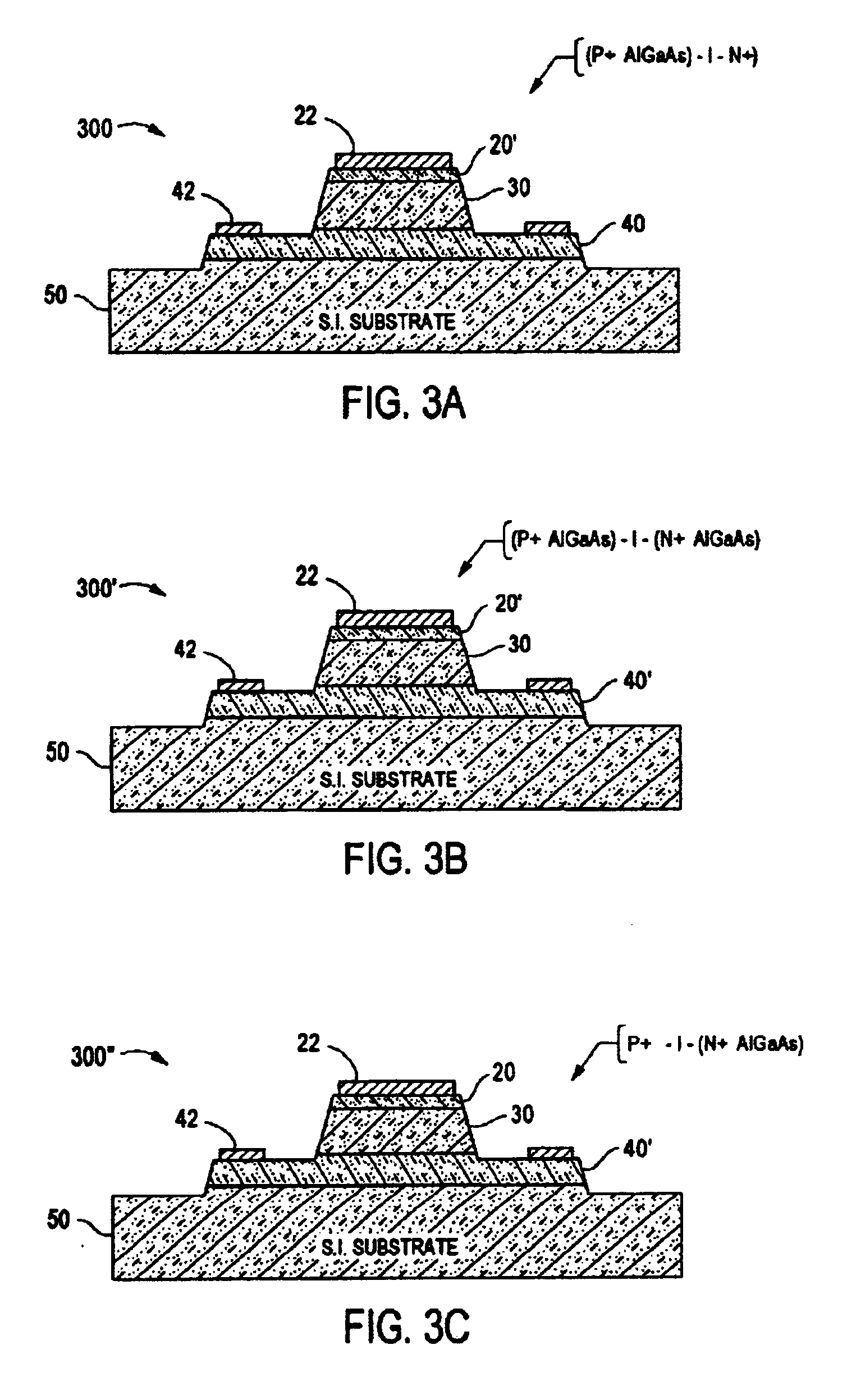Method of making heterojunction P-I-N diode
a technology of p-i-n diodes and heterojunction, applied in the field of heterojunction semiconductor devices, can solve the problems of reducing the performance characteristics of present p-i-n switching diodes, reducing the insertion loss without compromising, and not considering the gain, etc., to achieve the effect of reducing the series resistan
- Summary
- Abstract
- Description
- Claims
- Application Information
AI Technical Summary
Benefits of technology
Problems solved by technology
Method used
Image
Examples
Embodiment Construction
[0024]Referring now to FIGS. 1A and 1B, the basic theory of operation of P-I-N diodes will be briefly described. Throughout the drawings, like reference numerals are used to indicate like parts. P-I-N diode 100 comprises an intrinsic layer 120 of semiconductor material coupled between a layer 130 of P+ doped semiconductor material and a layer 110 of N+ semiconductor material. FIG. 1A illustrates schematically the diffusion of electrons (e) and holes (h) across the intrinsic (I) layer of width w upon application of a current source If to the two terminal device at low frequency operation (DC to ft). In this mode of operation, the current flow through the device may be described by the well-known diode equation I=I0(eq(Va−IRs) / nkT)−1). Operation of the P-I-N diode in this region may be characterized by a rectified RF voltage signal and a high loss non-linear device.
[0025]FIG. 1B illustrates schematically the high frequency operation (f0>ft) of a diode device where the transition frequ...
PUM
 Login to View More
Login to View More Abstract
Description
Claims
Application Information
 Login to View More
Login to View More - R&D
- Intellectual Property
- Life Sciences
- Materials
- Tech Scout
- Unparalleled Data Quality
- Higher Quality Content
- 60% Fewer Hallucinations
Browse by: Latest US Patents, China's latest patents, Technical Efficacy Thesaurus, Application Domain, Technology Topic, Popular Technical Reports.
© 2025 PatSnap. All rights reserved.Legal|Privacy policy|Modern Slavery Act Transparency Statement|Sitemap|About US| Contact US: help@patsnap.com



